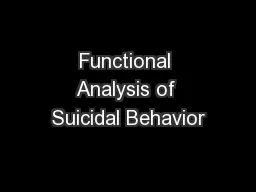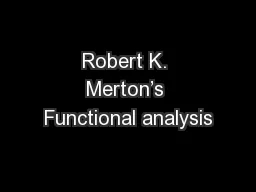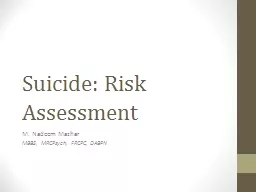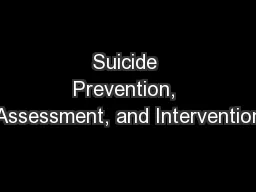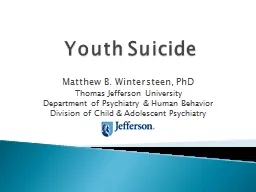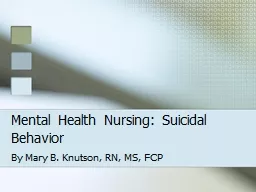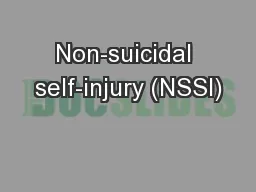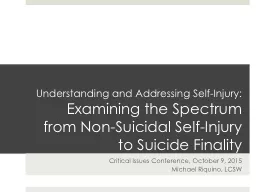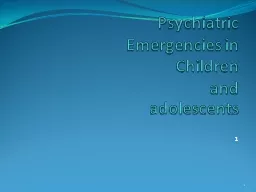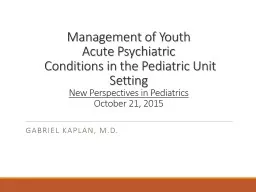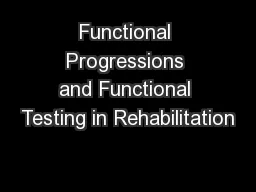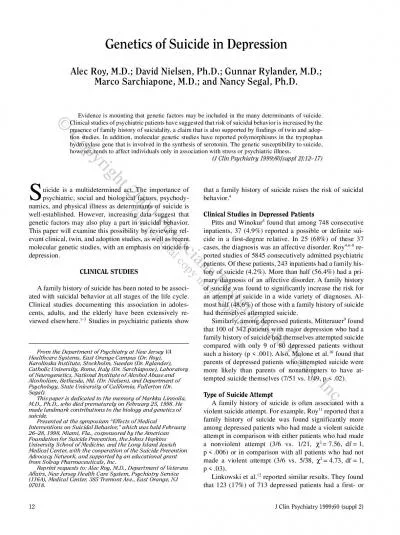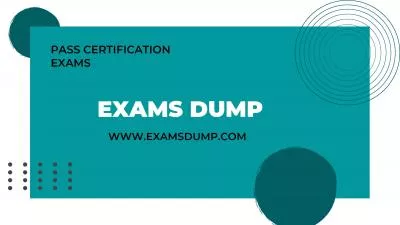PPT-Functional Analysis of Suicidal Behavior
Author : alida-meadow | Published Date : 2019-03-15
A Clinical Intervention for Suicide Prevention Beth S Brodsky PhD Cory Cunningham LCSW NYS Suicide Prevention Conference Albany New York September 18 2017 Treating
Presentation Embed Code
Download Presentation
Download Presentation The PPT/PDF document "Functional Analysis of Suicidal Behavior" is the property of its rightful owner. Permission is granted to download and print the materials on this website for personal, non-commercial use only, and to display it on your personal computer provided you do not modify the materials and that you retain all copyright notices contained in the materials. By downloading content from our website, you accept the terms of this agreement.
Functional Analysis of Suicidal Behavior: Transcript
Download Rules Of Document
"Functional Analysis of Suicidal Behavior"The content belongs to its owner. You may download and print it for personal use, without modification, and keep all copyright notices. By downloading, you agree to these terms.
Related Documents

